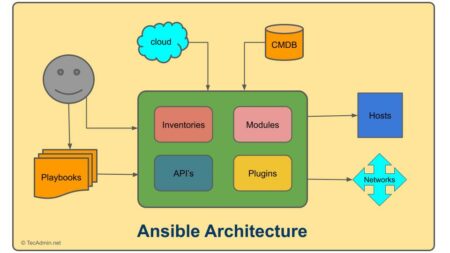In the world of infrastructure as code (IaC), Terraform has emerged as a powerful tool for provisioning and managing cloud resources. One of the key features of Terraform is workspaces, which allow you to manage multiple environments or configurations with ease. In this article, we will explore what Terraform workspaces are, how they can simplify infrastructure management, and provide examples and commands to help you get started.
What are Terraform Workspaces?
Terraform workspaces are a feature that enables you to manage multiple instances of the same infrastructure with different variables and states. They provide a way to organize and isolate your infrastructure deployments, making it easier to manage different environments such as development, staging, and production.
Workspaces allow you to create separate instances of your infrastructure, each with its own state file. A state file contains the current state of your infrastructure resources managed by Terraform. By using workspaces, you can work on different instances of your infrastructure without interfering with each other’s state.
Creating and Switching Between Workspaces
Let’s start by creating a new workspace. The terraform workspace new command creates a new workspace with the given name.
terraform workspace new development
To switch between workspaces, you can use the terraform workspace select command.
terraform workspace select development
If the workspace doesn’t exist, Terraform will create it for you. You can list all available workspaces using the terraform workspace list command.
terraform workspace list
Managing Variables with Workspaces
Workspaces allow you to define different variables for each environment. This feature is useful when you have configuration differences between environments, such as different AWS regions or instance types.
You can define workspace-specific variables in Terraform by creating a separate variable file for each workspace. For example, if you have a variable file named `variables.tfvars` for your development workspace, you can create another file named `variables.production.tfvars` for your production workspace.
To apply the workspace-specific variables, you can pass the `--var-file` option when running the terraform apply command:
terraform apply --var-file=variables.production.tfvars
Workspace Example:
Let’s consider an example where you want to provision an AWS EC2 instance in both development and production environments. You can start by creating two separate workspaces:
terraform workspace new developmentterraform workspace new production
Next, create a Terraform configuration file (e.g., main.tf) and define the required resources for the EC2 instance. Within this file, you can reference variables specific to each workspace:
1 2 3 4 5 6 7 8 | # main.tf resource "aws_instance" "example" { ami = var.ami_id instance_type = var.instance_type count = var.instance_count # ... other configurations } |
In the example above, the `ami_id`, `instance_type`, and `instance_count` variables are defined in separate variable files for each workspace.
Once you have the configuration set up, you can apply it to the specific workspace:
terraform workspace select developmentterraform apply --var-file=variables.development.tfvars
terraform workspace select productionterraform apply --var-file=variables.production.tfvars
Each workspace will have its own state file, ensuring the isolation of infrastructure resources and variables.
Conclusion
Terraform workspaces offer a convenient way to manage multiple instances of infrastructure deployments, each with its own state and variables. They simplify the process of managing different environments, making it easier to work on development, staging, and production configurations. By utilizing workspaces, you can maintain consistent and reproducible infrastructure across different environments while minimizing the risk of unintended changes or conflicts.
In this article, we have explored the concept of Terraform workspaces, discussed their benefits, and provided examples and commands to help you understand how to create and switch between workspaces. We also touched upon the management of variables specific to each workspace, enabling you to customize configurations based on the requirements of different environments.
By leveraging Terraform workspaces effectively, you can enhance your infrastructure management workflows, improve collaboration among teams, and achieve greater control and scalability in your infrastructure deployments.
